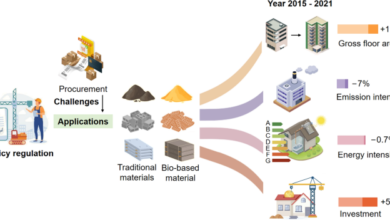Streamline Operations With Upstream Oil and Gas Software

You might think your current systems are sufficient, but upstream oil and gas software can significantly enhance your operations. By consolidating disparate data sources, you gain real-time analytics and predictive maintenance capabilities that optimize resource allocation. Automation reduces human error and boosts efficiency, directly impacting your bottom line. Additionally, advanced software tools improve safety and risk management, empowering you to make smarter, faster decisions. If you’re looking to scale your operations while cutting costs and enhancing strategic planning, you’ll want to explore how these technologies can transform your business practices.
Enhancing Data Management
Streamlining data management in the upstream oil and gas sector is crucial for optimizing operations and improving decision-making. You need robust data integration solutions to consolidate disparate data sources from geological surveys, drilling reports, and production metrics. By integrating these data streams, you eliminate silos and ensure that your team has access to comprehensive, real-time information. This consolidated data repository enhances your ability to analyze trends, predict outcomes, and make data-driven decisions, ultimately reducing operational risk.
Workflow optimization is another critical component. Efficient data management tools facilitate seamless workflows by automating routine tasks, such as data entry and report generation. This automation not only reduces human error but also frees up your technical staff to focus on more complex analytical tasks. Leveraging advanced algorithms and machine learning models, you can further refine these workflows to identify bottlenecks and inefficiencies.
Moreover, standardized data formats and protocols ensure compatibility across various software platforms, fostering better collaboration between departments. Implementing these strategies enhances your operational agility, allowing you to adapt quickly to market changes and regulatory requirements.
Real-Time Analytics
Harnessing real-time analytics in the upstream oil and gas sector revolutionizes operational efficiency and decision-making. By leveraging advanced data streams, you can monitor equipment in real-time, facilitating predictive maintenance and minimizing unexpected downtimes. This proactive approach allows you to address potential issues before they escalate, ensuring continuous operation and reducing costly disruptions.
Real-time analytics provide actionable insights into performance optimization. You can analyze data from drilling, extraction, and production phases to pinpoint inefficiencies and optimize resource allocation. Key performance indicators (KPIs) are monitored continuously, enabling adjustments on-the-fly for enhanced operational throughput.
Additionally, by integrating real-time analytics with your existing infrastructure, you gain a comprehensive overview of asset integrity and performance metrics. This integration supports the identification of trends and patterns that can inform strategic decisions.
For instance, you can forecast equipment failures and schedule maintenance during non-peak times, thereby maximizing uptime and extending the lifespan of critical assets.
In essence, real-time analytics empower you to move from reactive to proactive management. This shift not only enhances operational efficiency but also drives cost savings and boosts overall productivity. By focusing on predictive maintenance and performance optimization, you ensure your operations are both resilient and agile.
Automation Benefits
Automation technology in upstream oil and gas operations offers transformative efficiency and precision. By integrating advanced software solutions, you can achieve remarkable process optimization. Automated systems reduce the margin for human error, ensuring that data collection and interpretation are executed with unparalleled accuracy. This not only enhances operational reliability but also allows for predictive maintenance, thereby minimizing unexpected downtimes.
With workflow efficiency at the core, automation streamlines various tasks from drilling to production. You’ll find that automated scheduling and resource allocation enhance project timelines, allowing you to meet tight deadlines without compromising on quality.
Furthermore, automation aids in real-time monitoring and control, providing instant feedback and enabling swift corrective actions.
By leveraging machine learning algorithms and artificial intelligence, you can optimize resource utilization, ensuring that every asset is used to its maximum potential. Automation software offers robust data analytics capabilities, giving you insights that drive strategic decision-making.
Incorporating automation into your upstream operations not only elevates efficiency but also provides a competitive edge in a data-driven industry. You’ll be better equipped to adapt to market fluctuations and regulatory changes, ensuring sustained operational excellence.
Cost Reduction Strategies
In the realm of upstream oil and gas operations, effective cost reduction strategies are paramount for maintaining profitability amidst fluctuating market conditions. You need to focus on efficiency optimization and precise resource allocation to streamline your processes and reduce overheads.
First, analyze your current workflows to identify bottlenecks and inefficiencies. Implementing software solutions specifically designed for upstream operations can automate repetitive tasks and enhance data accuracy. This not only reduces labor costs but also minimizes the risk of costly errors.
Next, scrutinize your resource allocation. Utilize predictive analytics to forecast demand and adjust your resource distribution accordingly. This ensures that your drilling rigs, personnel, and materials are deployed where they’re most needed, maximizing operational efficiency and minimizing waste.
Moreover, consider integrating real-time monitoring systems. These systems provide instantaneous data on equipment performance and resource consumption, enabling you to make informed decisions quickly. By maintaining optimal equipment performance, you can avoid unexpected downtimes and the associated costs.
Lastly, leverage cloud-based solutions for data storage and management. These solutions offer scalability and reduce the need for expensive, on-site IT infrastructure. By optimizing your resource allocation and enhancing efficiency, you can achieve significant cost reductions while maintaining high operational standards.
Improving Safety
Ensuring safety in upstream oil and gas operations isn’t just a regulatory requirement; it’s a critical component of operational integrity and workforce morale. Implementing advanced upstream oil and gas software allows you to manage safety protocols effectively and enhance risk mitigation strategies. Such software provides real-time data analytics, enabling you to identify potential hazards before they escalate into critical incidents.
With integrated safety management systems, you can automate the monitoring of safety protocols, ensuring compliance with industry standards. The software’s predictive analytics capabilities allow you to foresee and address operational risks proactively. By collecting and analyzing data from various sensors and devices, you can make informed decisions that reduce the likelihood of accidents.
Furthermore, this technology supports digital twin modeling, which simulates operational scenarios to evaluate risk factors and test safety measures. It equips you with actionable insights, facilitating immediate corrective actions in high-risk situations. This leads to a safer working environment, minimizing downtime and operational disruptions.
Smarter Decision Making
Leveraging advanced upstream oil and gas software, you can make more informed and timely decisions that drive operational excellence. By integrating data visualization tools, you can transform raw data into actionable insights. These visual representations allow you to quickly identify patterns, trends, and anomalies in reservoir performance, drilling efficiency, and production rates.
Predictive modeling is another crucial feature. Utilizing historical data, machine learning algorithms, and statistical techniques, predictive models forecast future production trends, equipment failures, and market fluctuations. This empowers you to optimize resource allocation, schedule maintenance proactively, and mitigate risks effectively.
The software’s analytics capabilities provide real-time monitoring of key performance indicators (KPIs), ensuring you always have a pulse on operational health. Detailed dashboards offer a comprehensive view of critical metrics, from well pressure to flow rates, enabling faster response times to potential issues and better strategic planning.
Moreover, the ability to integrate various data sources—geological surveys, seismic data, and sensor readings—into a unified platform enhances data accuracy and consistency. This holistic view facilitates collaborative decision-making across departments, ensuring that all stakeholders are aligned and informed.
Incorporating these advanced tools into your workflow not only boosts operational efficiency but also enhances your ability to make smarter, data-driven decisions in the fast-paced upstream oil and gas industry.
Conclusion
In a nutshell, streamlining operations with upstream oil and gas software is a game-changer. By enhancing data management, leveraging real-time analytics, and integrating automation, you’ll cut costs and boost efficiency. These advancements not only improve safety but also empower smarter decision-making. With these tools at your disposal, you’ll be well-equipped to navigate industry challenges and seize opportunities with precision and confidence.
Keep an eye for more news & updates on UsaTechMagazine!





